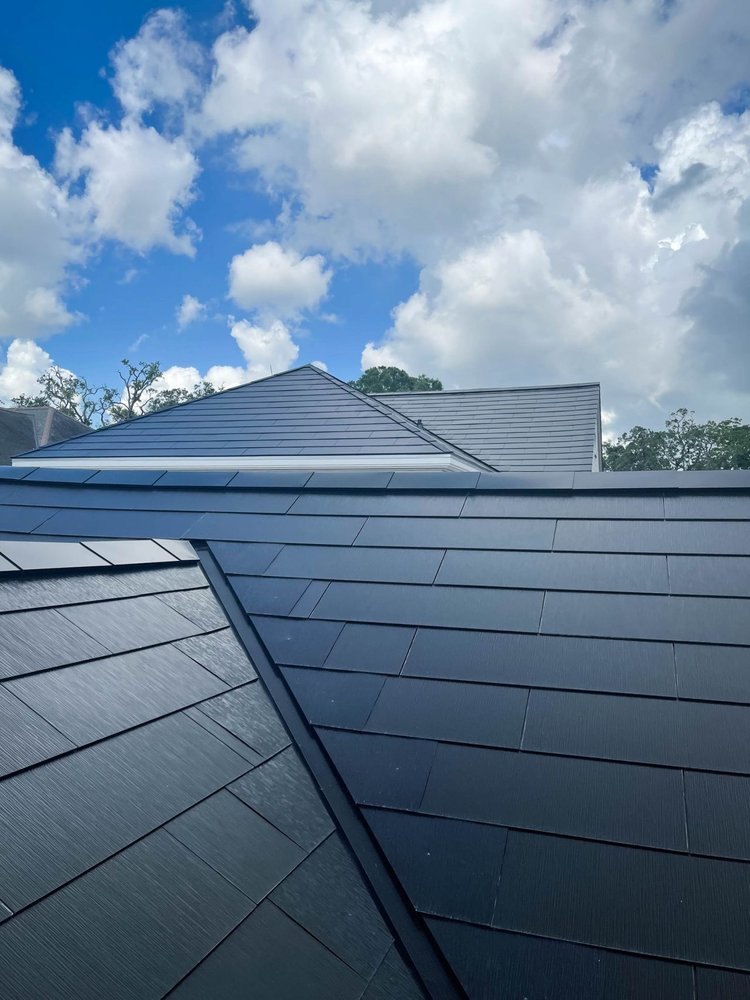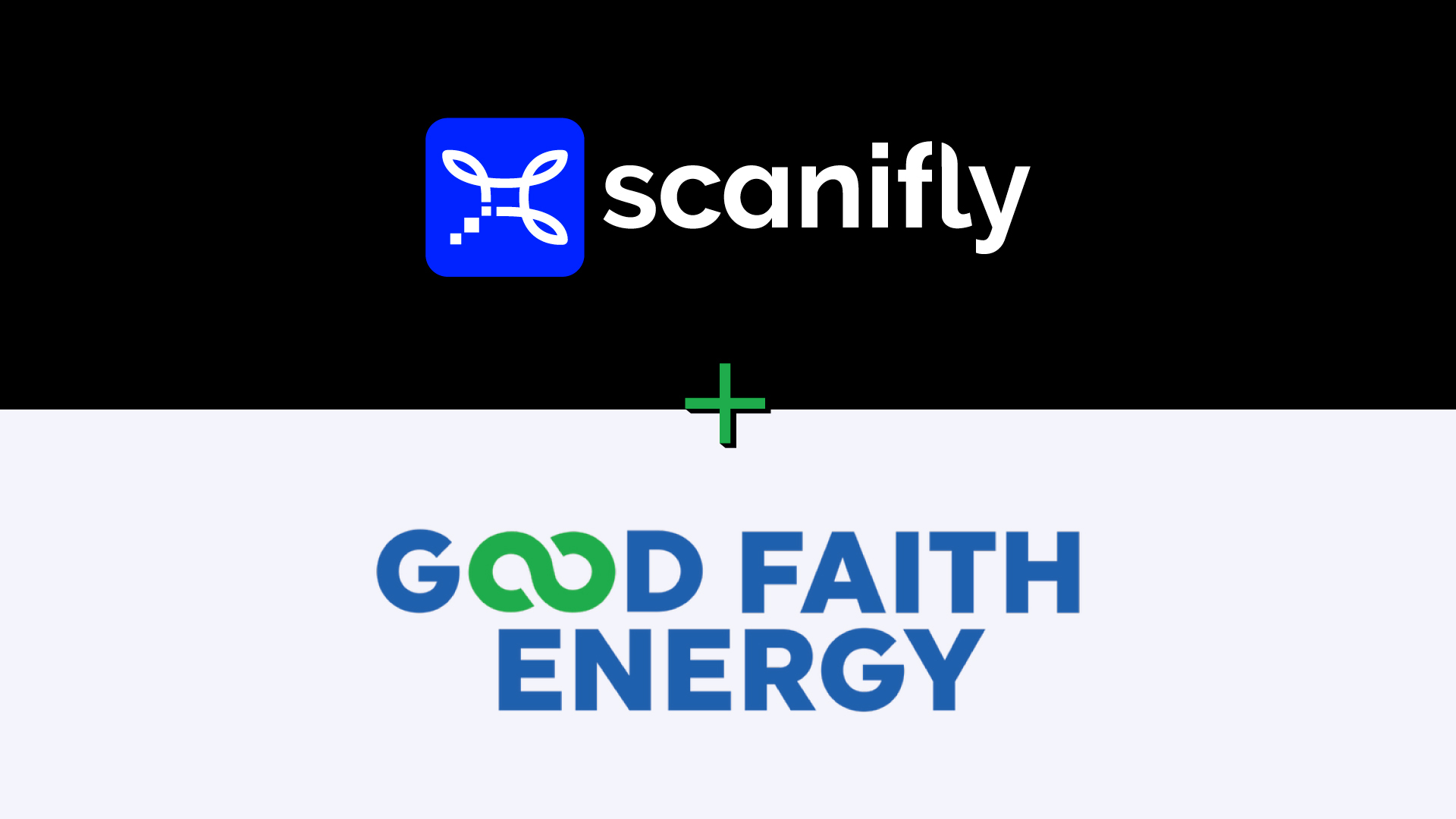What if your entire roof could produce solar energy for you?
That’s the promise of Tesla Solar Roof, a new kind of solar panel that doubles as a roof shingle. Instead of retrofitting panels on top of your roof, these solar tiles provide all the protection you expect from shingles while delivering solar power to your house.
Omar Elnomrosy, the Lead Design Engineer at Good Faith Energy, is one of the only Tesla Solar Roof Certified Installers in Texas and he’s seen demand skyrocket.
In a Q&A interview with Scanifly, Omar talked about his work with Tesla Solar Roof and how the company leverages Scanifly software to help design their projects with ease.
Why did you start working with Tesla Solar Roof?
Good Faith Energy has been operating for about seven years now. Our goal is to provide the best energy outcomes for our customers, something we accomplish by always being on the cutting edge of technology.
We specialize in solar storage and solar roofs, and as of now we’re one of the only Certified Installers for Tesla Solar Roof in Texas.
How is Tesla Solar Roof different from traditional solar panels?

A Tesla Solar Roof installation on a home in Texas
(image courtesy of Good Faith Energy)
The two key differences are that Tesla Solar Roof tiles are smaller than a traditional retrofit solar panel and we are doing an entire roof project rather than adding panels on top of the roof.
From a size point of view, Tesla Solar Roof tiles are in between a traditional asphalt shingle and a retrofit solar panel, but the aesthetic is much sleeker than either. The smaller size is convenient as it allows us to put tiles wherever they need to be. This is particularly helpful on steep roofs or roofs with multiple planes that may not fit a typical solar panel.
Since every project we do is also a traditional roof replacement project, there are solar tiles that capture energy and non-solar tiles that don’t. We have to design the roof accurately to place as many solar tiles as possible while putting non-solar tiles on shaded areas of the roof.
In the end, the Tesla Solar Roof system ends up matching the energy production of a retrofit solar panel on flat roofs but can deliver a higher capacity system for a complex or steeply-pitched roof.
Because we’re doing a whole roof project and have more flexibility with where we place solar tiles, the site survey, especially accurate shade analysis, is absolutely critical for us.
What’s the survey process for the Tesla Solar Roof?
Our survey process is highly intense and involved, since we need to know the entire roof plane to within a couple inches in order to properly design a solar tile system.
Doing it manually, a survey can easily take 4-5 hours and require a lot of tools to harness into complex roofs. In the end, we need to know: ridge lines, roof hips and valleys, height and placement of obstructions, and the total solar resource fraction (TSRF).
Where our work gets more difficult is around obstructions. Tesla Solar Roof tiles are much smaller than retrofitted solar panels, so even a few inches on a chimney could shade a whole tile or a few extra inches of flashing could alter a tile’s placement. These small details don’t matter as much on a retrofit panel system, but are make-or-break for us.
How does Scanifly help you?
Scanifly has been a huge help in a few key ways:
-
Time savings on surveys: We go from 4-5 hours doing it the manual way to maybe 15 minutes with Scanifly and a drone.
-
More accuracy: The accuracy of Scanifly makes it easier for us to plan not only for the solar tile placement but also plan the entire roof job of flashing and non-producing tiles in an aesthetically pleasing way.
-
Obstruction detection and shading analysis: Scanifly’s accuracy and detail focus makes it a lot easier for us to plan those small details that have a huge impact for solar tiles.
-
Faster and easier design: Scanifly’s design tools make it easy to show arrays. We can easily recreate solar tiles within Scanifly as a custom object to show customers what their roof will look like and help inform our permitting and installation plans.

What’s your opinion on the future of solar?
I’m cautiously excited for the industry. I hope that solar will be more widely adopted, yet I’m also concerned that rising costs from supply chain issues might slow down that growth. There’s also still a big need for policy and incentives to keep solar adoption rates high.
In the end, though, I think storage will play a huge part in the solar industry’s overall growth. More people want to control and own their energy, especially for keeping houses at a comfortable temperature at night or operating when the grid fails.
With battery technology improving alongside solar incentives, I think we’re headed to a bright future.






